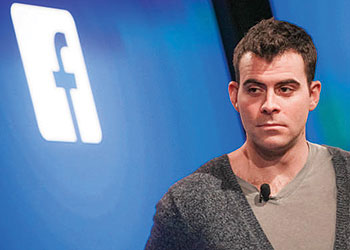If Facebook Home, the company’s family of applications that make the social network unavoidable on Android devices such as the HTC First, had an architect, it would be Director of Product and project lead Adam Mosseri. CNET sat down with Mosseri on Thursday after the company lifted the curtain on Home. Mosseri proved a lively interview subject.


If Facebook Home, the company’s family of applications that make the social network unavoidable on Android devices such as the HTC First, had an architect, it would be Director of Product and project lead Adam Mosseri.
CNET sat down with Mosseri on Thursday after the company lifted the curtain on Home. Mosseri proved a lively interview subject.
There’s the argument that this is so much Facebook -- like way too much Facebook. Who wants this? What would you say to that?
The way we think about it is a little different. We don’t think about it as Facebook. We think about it as your friends’ content. We’re really trying actively to get out of the way and put people’s content first.
So we’re seeing, like we said in the presentation, a ton of use on Facebook -- over 20 percent of people’s time spent on apps on Facebook. If you add Instagram, it’s over 25 [percent]. So that, to us, is a signal that people care about what their friends are doing and saying, and the photos they’re posting, and where they’re checking in, and all of that.
Talk to me about the noises.
We only have a few; there’s not too many. So when you use your profile picture you get a couple of different ones.
We try to be really judicious about sound usage, because sound usage could be really annoying. But we also want the experience to feel really delightful.
We want the experience to be playful and fun. We want to facilitate the like. And sometimes, in the right moments, sound can really help sort of augment that. But sometimes, if it’s overused, it can be...annoying.
When you start up app launcher or open up messenger, you get a simple click [sound].
Did you do user testing on that?
Mosseri: We do user testing on everything, but we didn’t have a test for, like, "what do you think of these sounds?”
We do two different things. Well, we do a lot of things, but two things are particularly important. We had regular user tests...come in and use the product, and we got a sense for the pain points, what was working, what was not.
And we also do what we internally call "dogfooding.” It’s kind of a terrible expression, but it’s pretty common. But we had employees use the software for a long time. For about two or three months, we had a group of employees, roughly 100, using the software every day as their primary phone.
We get a whole bunch of good data from them. We can see how they’re using the product, how often they’re using it, what’s happening, what’s not, are likes going up, are the likes going down. And then they belong to a group where they provide their feedback, and they’re very vocal about what they like and what they don’t like. We have researchers who comb through all the quantitative and qualitative data, and then look for patterns and bubble them up. We do this for all of our new products.
What didn’t they like?
Mosseri: They didn’t like that the content in Cover Feed was stale, but it turns out we had a bug so we weren’t showing new content. So we fixed it.
One thing that we do is we make sure that if you’ve seen [a piece content], we try not to show it to you again, but we had a bug where we were forgetting that you had seen it, which means you would see it again.


